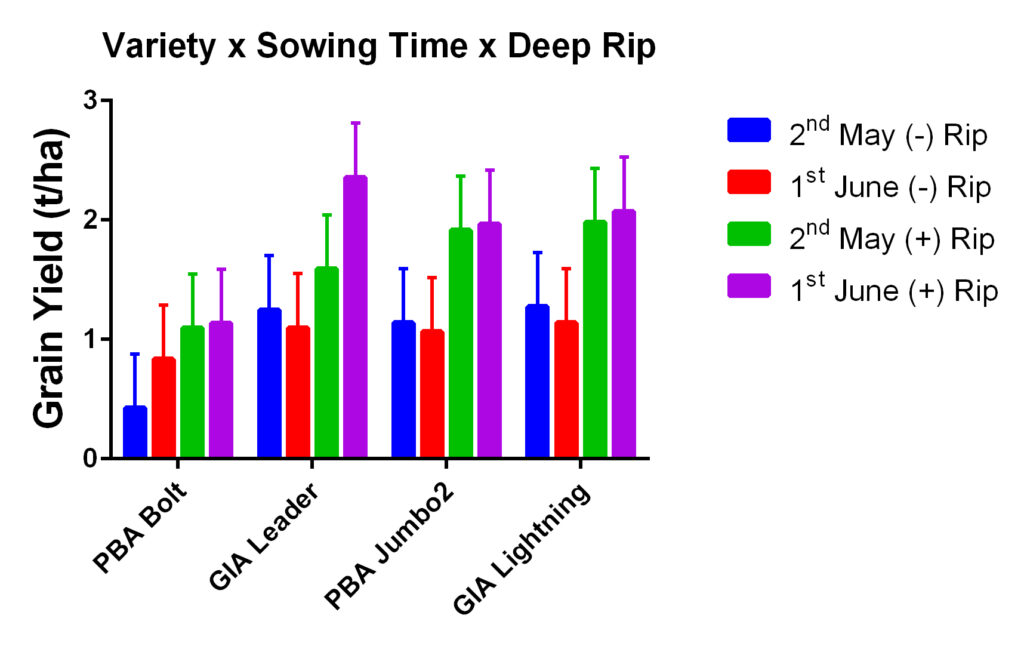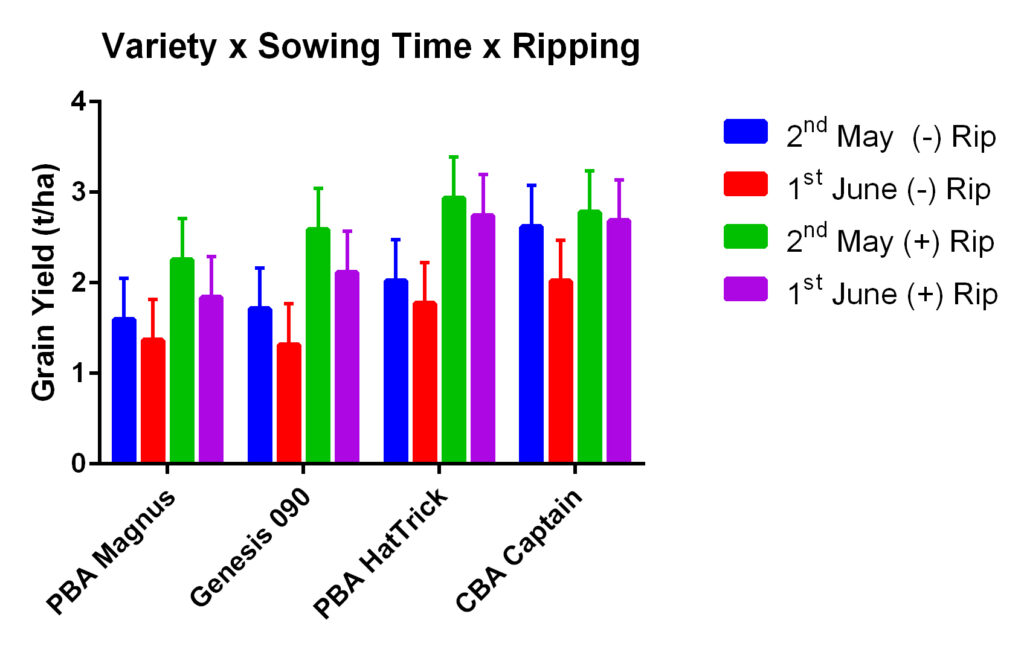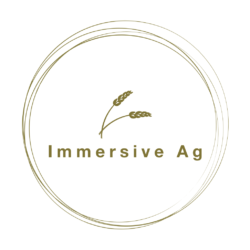About the Trial
A trial site was established near Ouyen in the Victorian Mallee on a deep sand dune soil. Deep ripping was undertaken in April to a depth of 50cm. The deep ripper was fitted with Tilco A66 tynes spaced at 56 cm apart. Crops were sown on two dates: 2nd May and 1st June 2022. At each sowing time four varieties of Chickpeas and Lentils were sown (Table 1)
| Chickpea Varieties | Lentil Varieties |
|---|---|
| Genisis 090 | PBA Bolt |
| CBA Captain | GIA Lightning |
| PBA Hatrick | PBA Jumbo2 |
| PBA Magnus | GIA Leader |
Seasonal Conditions
Timely crop establishment was achieved with over 100 mm falling during the critical April – May sowing window. The site experienced a relatively dry winter period with just 60 mm of rainfall recorded from June to August. Extremely high levels of rainfall were received during spring with 300 mm of rain falling from September to early November with 126 mm of this received during October. Due to the sandy texture of the soil, waterlogging was not a problem, however the growing season was extended three weeks longer than normal. This made disease control difficult, and some level of disease was present in the crop.
Results: Lentil
Deep ripping increased lentil grain yield by 0.7 t/ha (Figure 1). The grain yield of PBA Bolt was 0.7 t/ha less than the other varieties included in the trial. As a single factor, delayed had only a minor impact chickpea grain yield in the very wet 2022 season.
When all three factors were combined there was a yield gap of 2 t/ha between the best and worst treatments (Figure 2). PBA Bolt sown early without deep ripping resulted in the worst yield outcome of the trial (0.4 t/ha), while late sown PBA Jumbo2 with deep ripping produced the best grain yield (2.4 t/ha.)


Results: Chickpea
Deep ripping increased chickpea grain yield by 0.7 t/ha (Figure 3). Desi varieties CBA Captain and PBA Hattrick had a 0.6 t/ha advantage over the Kabuli varieties Genesis 090 and PBA Magnus. As a single factor, delayed had only a minor impact chickpea grain yield in the very wet 2022 season.
When all three factors were combined there was yield gap of 1.6 t/ha between the best and worst treatments (Figure 4). For example, sowing Desi chickpeas early following deep ripping resulted in a grain yield of 2.9 t/ha while sowing Kabuli chickpeas late into un-ripped soil resulted in a grain yield only 1.3 t/ha.


Acknowledgements
This virtual field day has been developed as part of the Mallee Sustainable Farming (MSF) project:
“Facilitating enhanced knowledge sharing of Mallee sustainable farming practices”
This project is supported by the Mallee Catchment Management Authority, through funding from the Australian Governments’ National Landcare Program.


